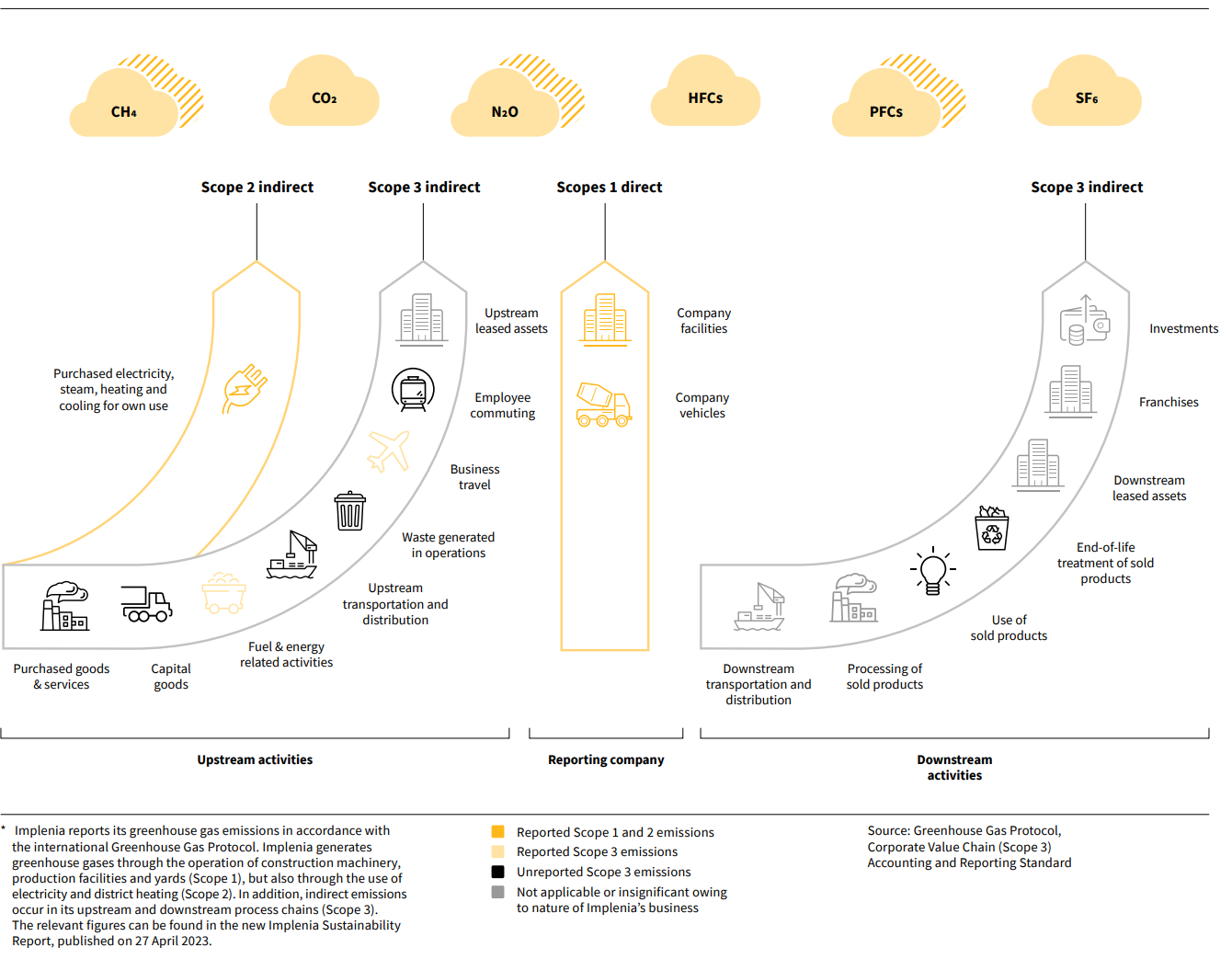Environment
The company has been reporting its CO2 footprint for Switzerland since 2012. Last year, a complete CO2 footprint was reported for Scope 1 and 2 emissions in all markets for the first time. The Group is also working on Scope 3 emissions reporting for the first time (chart on page 57). Additionally, key data was reported through the Carbon Disclosure Project (CDP). Better measurability helps Implenia adopt targeted measures to reduce its CO2 emissions.
Sustainability certification for ongoing building construction projects has been consistently high for several years; an increasing number of projects in civil engineering are now also meeting sustainability standards. Implenia aims to reduce the CO2 footprint of the projects it develops itself; it particularly wants to promote the use of renewable energy sources and low-CO2 materials. “We have therefore reviewed our Swiss development portfolio in line with the SIA energy efficiency path,” says Rolf Wagenbach, Global Head Sustainability. “Based on our findings, we can now develop measures to achieve net zero at the operating emissions and grey emissions levels in the medium term. This is part of the journey towards developing, building and operating ‘Net Zero Carbon Buildings’ in future.” A process has been set up with the Real Estate Division to manage this. This should ensure that new development projects have a CO2 budget in accordance with the reduction path and that they fulfil the requirements of the Swiss Sustainable Building Standard (SNBS) in Switzerland, and the “Effizienzhaus” standard in Germany.
CO2 reduction and circular economy in focus
Implenia believes that closing material cycles has great potential to reduce CO2 emissions in the construction industry and save primary resources. The company intends to develop new circular business models by 2025. The Real Estate Products Business Unit, for example, develops scalable, industrially manufactured real estate products based on wide-ranging circular principles. This was recognised when Real Estate Products received the “Advanced” Circular Globe Label from the SQS rating agency at the end of 2022 – a first for the real estate industry. This marked a major improvement for the new business unit compared with the pilot assessment. The label is valid until 2025 and covers the entire range of Real Estate Products services.
Systematically recording environmental incidents
The Synergi Life tool has been used across the Group since 2021 to record accidents and environmental incidents systematically. It then divides them into five categories depending on their severity. This enables Implenia to practice professional environmental management and to avoid incidents through targeted prevention measures.
Implenia also trains its employees on sustainability topics – general ones and those specific to their area of work – through the Sustainability Academy, which was launched in 2022. E-learning modules on environmental protection and CO2 reduction have already been introduced.
What are Scope 1, 2 and 3 greenhouse gas emissions?
Scope 1 Emissions caused directly by a company’s use of fuel in operations and transport, as well as fugitive emissions.
Scope 2 Indirectly generated emissions resulting from the use of purchased electricity, steam, heating and cooling.
Scope 3 All other indirect emissions in a company’s value chain caused by its activities.

